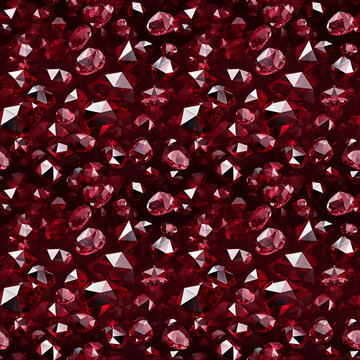What Are Blood Diamonds?
Definition and Origin
Blood diamonds, also known as conflict diamonds, are gemstones mined in war zones and sold to fund armed conflict. They often come from regions where mining revenues are used to finance brutal civil wars, contributing to violence and human rights abuses. The term “blood diamond” was popularized in the 2006 film Blood Diamond, which highlighted the grim reality behind these gems.
Historical Context
The trade of blood diamonds gained international attention during the 1990s, particularly in Sierra Leone, Angola, and the Democratic Republic of Congo (DRC). Rebel groups in these countries used diamond sales to fuel their campaigns, resulting in immense suffering for local populations. The term “blood diamond” embodies the violent history associated with these precious stones.
The Ethical Dilemma
Human Rights Violations
The most glaring issue with blood diamonds is their association with human rights abuses. Miners, often working under harsh conditions, face exploitation and violence. Reports from conflict zones reveal instances of forced labor, child labor, and violence against workers. These diamonds represent more than just luxury; they symbolize the exploitation and suffering endured by countless individuals.
Environmental Impact
Beyond human rights concerns, the environmental impact of diamond mining in conflict zones is profound. Deforestation, soil erosion, and water pollution are common in these regions. The quest for diamonds often leads to the destruction of natural habitats, affecting biodiversity and contributing to long-term ecological damage.
Global Efforts to Combat Blood Diamonds
The Kimberley Process
How It Works
The Kimberley Process Certification Scheme (KPCS) was established in 2003 to prevent the trade in conflict diamonds. It requires that diamonds be certified as conflict-free before they can enter the global market. This certification aims to trace the origin of diamonds and ensure they are not used to fund armed conflict.
Limitations and Criticisms
Despite its intentions, the Kimberley Process has faced criticism. Some argue that it is ineffective due to loopholes and inadequate enforcement. For instance, diamonds can still be smuggled through non-participating countries, bypassing the certification system. Additionally, the process does not address human rights abuses or environmental damage directly linked to diamond mining.
Role of NGOs and Advocacy Groups
Non-governmental organizations (NGOs) and advocacy groups play a crucial role in addressing the issues surrounding blood diamonds. They raise awareness, push for stronger regulations, and support affected communities. Organizations like Global Witness and Amnesty International have been instrumental in highlighting the dark side of the diamond trade and advocating for ethical practices.
The Impact on the Diamond Industry
Market Changes
The exposure of blood diamonds has led to significant changes in the diamond industry. Jewelers and retailers are increasingly aware of the ethical implications of their products. Many now source their diamonds from conflict-free regions and prioritize transparency in their supply chains. This shift reflects a growing consumer demand for ethically sourced goods.
Consumer Awareness
Consumer awareness has also risen. Shoppers are more informed about the origins of their purchases and are increasingly seeking out ethical alternatives. The rise of “ethical” or “fair-trade” diamonds indicates a positive shift towards more responsible consumer behavior.
How to Ensure Ethical Jewelry Purchases
Certification and Transparency
When buying diamonds or other gemstones, look for certification from reputable organizations. Certifications such as the Kimberley Process or third-party ethical labels can provide assurance that your purchase is conflict-free. Transparency in the supply chain is crucial, so ask about the source of the diamond and the ethical practices of the retailer.
Supporting Ethical Brands
Choose to support brands and jewelers committed to ethical practices. Many companies now offer ethically sourced diamonds and are transparent about their supply chains. By supporting these businesses, you contribute to a more sustainable and humane diamond industry.
Lab grown diamonds are revolutionizing the world of gemstones by offering a sustainable, ethical, and affordable alternative to mined diamonds. Created using advanced technological processes, such as High Pressure High Temperature (HPHT) and Chemical Vapor Deposition (CVD), these diamonds exhibit the same physical, chemical, and optical properties as their natural counterparts.
Case Studies and Examples
Notable Incidents
Several high-profile incidents have brought attention to the issue of blood diamonds. The civil wars in Sierra Leone and Angola, as depicted in the film Blood Diamond, are prominent examples of how diamond revenues can fuel conflict. These cases highlight the urgent need for ethical practices in the diamond trade.
Successful Resolutions
On a positive note, there have been successful efforts to resolve issues related to blood diamonds. The establishment of the Kimberley Process and the increasing awareness among consumers and companies have led to improvements. Some conflict-affected regions are seeing positive changes due to these efforts.
The Future of Blood Diamonds
Emerging Trends
The future of blood diamonds is increasingly focused on ethical sourcing and innovative practices. Advances in technology, such as blockchain for tracking diamonds, promise greater transparency and accountability in the diamond supply chain. These trends signal a shift towards a more ethical and sustainable industry.
Innovations in Tracking and Verification
Technological innovations are making it easier to trace diamonds from mine to market. Blockchain technology, for example, offers a tamper-proof way to track the origins of diamonds, ensuring they are not linked to conflict. Such innovations are crucial for the future of ethical jewelry.
Conclusion
The issue of blood diamonds is a stark reminder of the impact that consumer choices can have on global issues. While the diamond industry has made strides towards ethical practices, there is still much work to be done. By staying informed, supporting ethical brands, and demanding transparency, we can contribute to a more responsible and humane diamond market. Our choices matter, and together, we can help ensure that the beauty of diamonds does not come at the cost of human suffering and environmental destruction.

